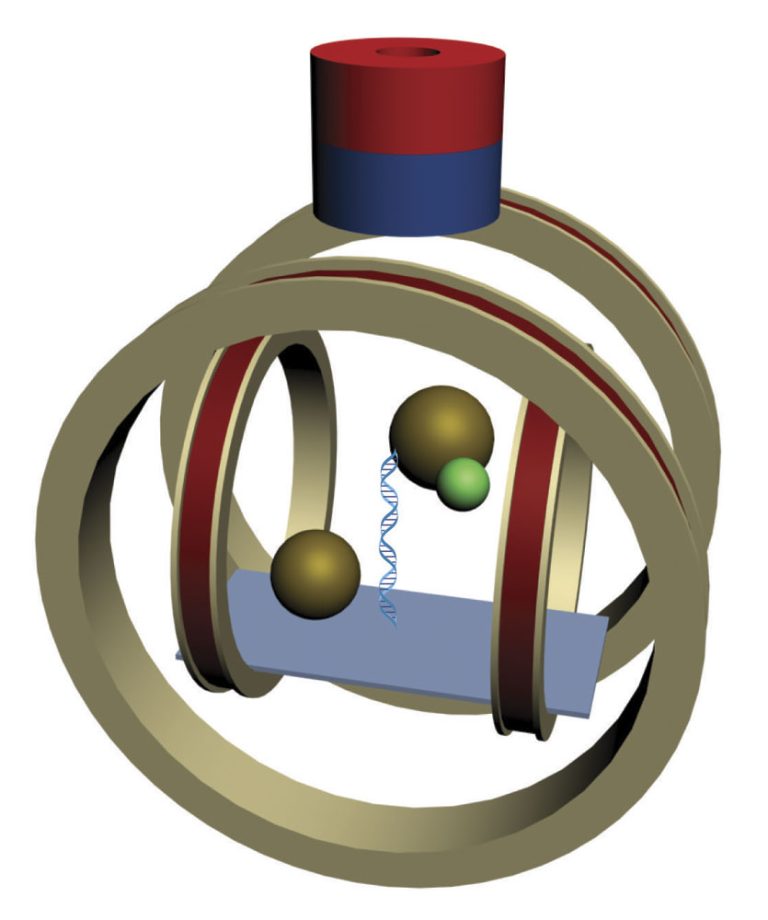With their improved magnetic tweezers, Kavli Institute researchers at Professor Nynke Dekker’s lab can measure torques at a molecular scale.
Magnetic tweezers are an attractive instrument for measuring the behavior of single molecules of DNA. has been the molecule of choice for most demonstrations of. The ‘classic’ magnetic tweezers were developed at the Ecole Normale Supérieure in Paris in 1996, where Professor Nynke Dekker worked as a postdoc a few years later. The instrument had a millimetre-sized but strong permanent magnet that attracted magnetic beads attached to DNA molecules. The DNA fragments were about 16 micrometers long and the beads a few microns across. Upon turning the magnet, beads would follow. This allowed one to manipulate single molecules – hence the name.
Amazing as the achievement was, it did leave room for improvement. Kavli researcher, Dr Jan Lipfert (Applied Sciences), won a Veni grant in 2009 for his proposal to advance the tweezers’ technology. In 2010 he presented a version in which the torque could be measured, but pulling force and torque were still coupled. In the 2012 version, that dependence has been overcome.
The new eMTT tweezers still feature a permanent magnet that pulls up the magnetic beads and the DNA molecules that are attached to them. But this time, the torque is applied by the electromagnetic field (hence the ‘e’ in eMTT) of two sets of Helmholtz coils. They create a homogenous, horizontally-orientated magnetic field that can be rotated at will. The currents through the coils are directly related to the stiffness of the torsional trap in which the magnetic bead finds itself.
This set up, built by postdoc Dr Xander Janssen, Dr Jan Lipfert, and colleagues allowed the group to quantify the torque at which a DNA molecule buckles: in the epxeriments, typically about 30 picoNewton-nanometre. Yes, tiny indeed. The buckling can be seen in any piece of string you wind up: after a while (30 turns in the case of the DNA molecule employed) it will curl around itself and shorten drastically. Using their new instrument, Prof. Dekker and her group re-examined this buckling transition and were among the first to show that it is accompanied by an “overshoot” in the torque, i.e. it reaches a maximum and then suddenly drops to a final plateau value.




Comments are closed.